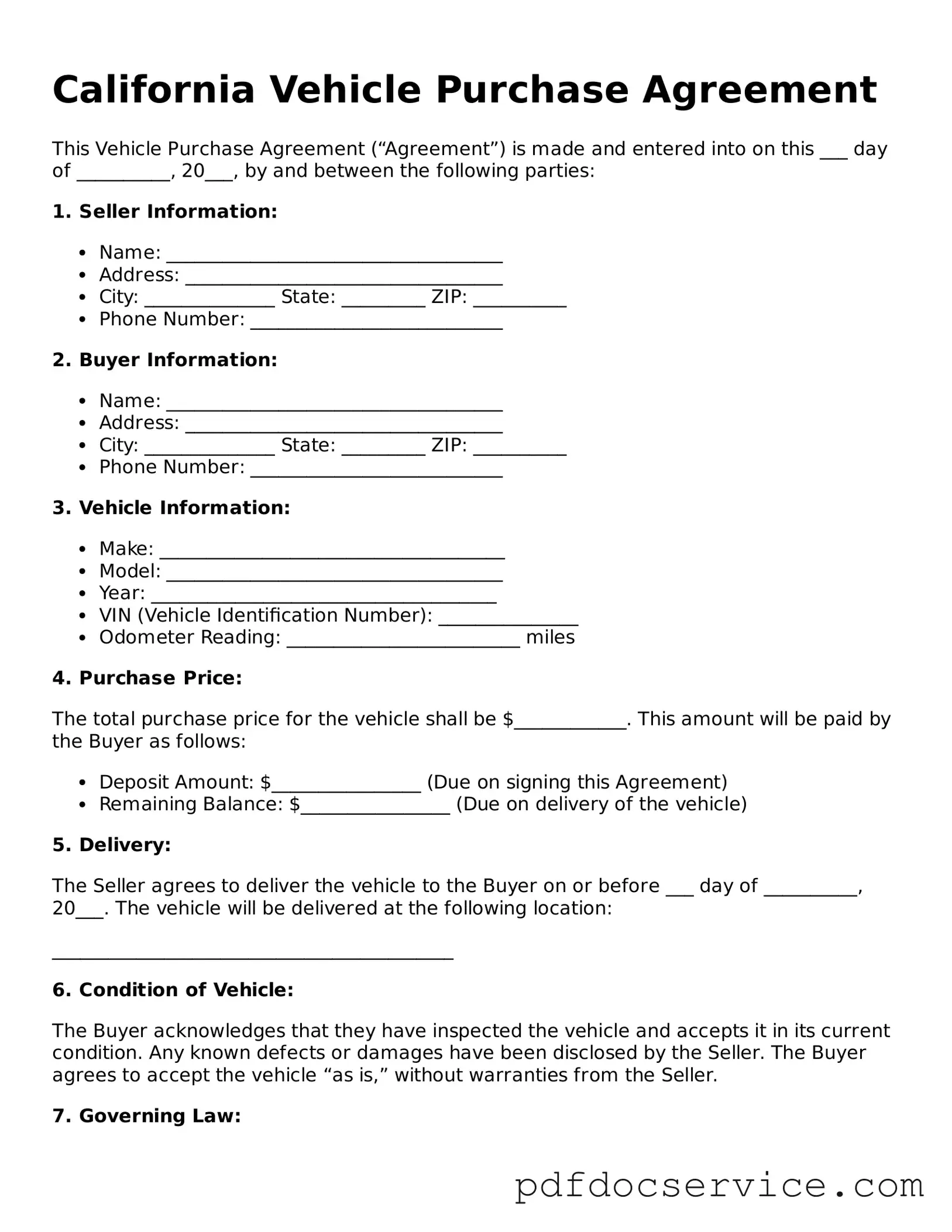Printable Vehicle Purchase Agreement Template for California
The California Vehicle Purchase Agreement form is a document that outlines the terms and conditions of a vehicle sale between a buyer and a seller. This agreement serves to protect both parties by clearly stating the purchase price, vehicle details, and any warranties or conditions associated with the sale. Understanding this form is essential for anyone involved in buying or selling a vehicle in California.
Open Vehicle Purchase Agreement Editor
